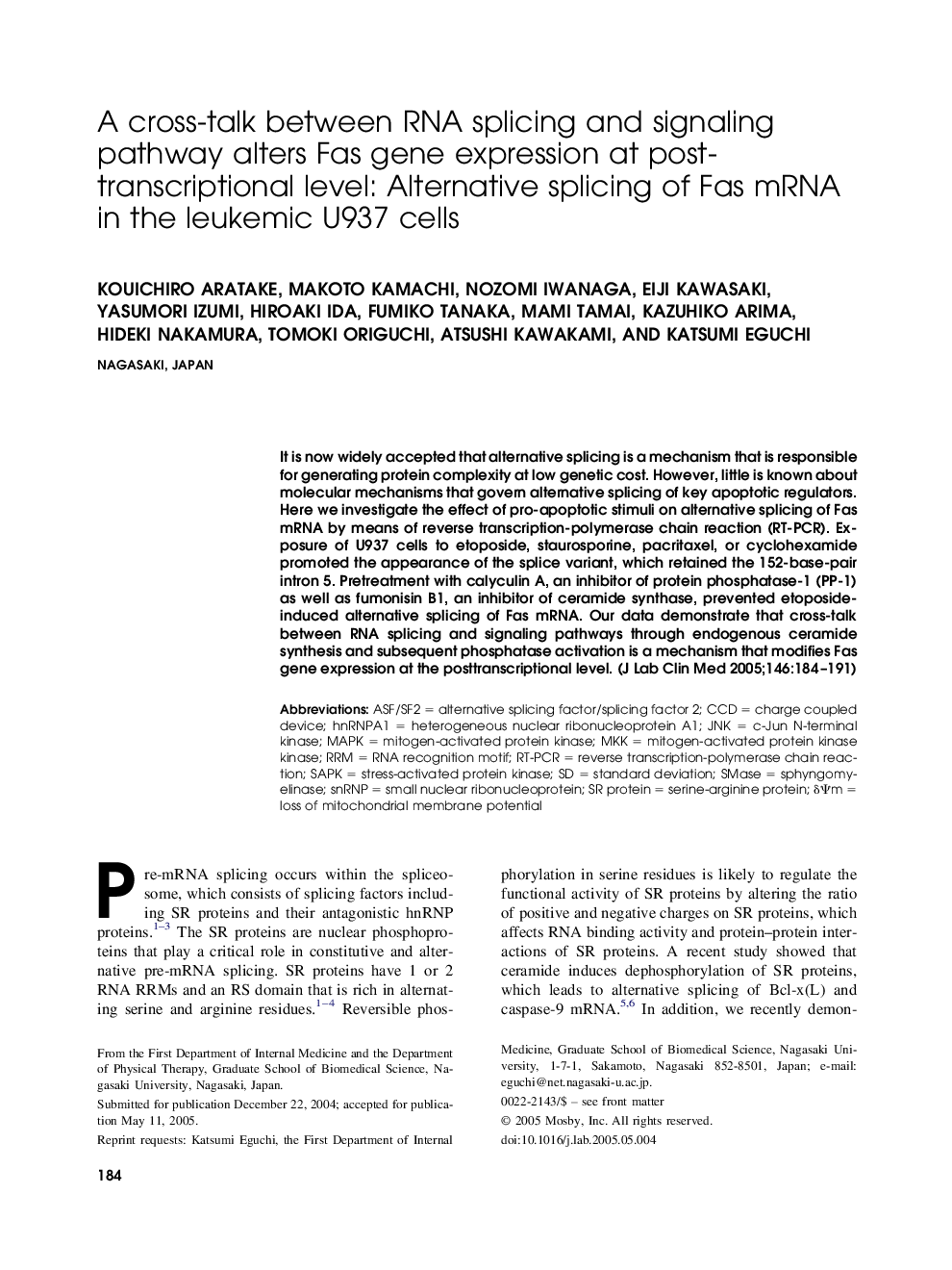| Article ID | Journal | Published Year | Pages | File Type |
|---|---|---|---|---|
| 9296412 | Journal of Laboratory and Clinical Medicine | 2005 | 8 Pages |
Abstract
It is now widely accepted that alternative splicing is a mechanism that is responsible for generating protein complexity at low genetic cost. However, little is known about molecular mechanisms that govern alternative splicing of key apoptotic regulators. Here we investigate the effect of pro-apoptotic stimuli on alternative splicing of Fas mRNA by means of reverse transcription-polymerase chain reaction (RT-PCR). Exposure of U937 cells to etoposide, staurosporine, pacritaxel, or cyclohexamide promoted the appearance of the splice variant, which retained the 152-base-pair intron 5. Pretreatment with calyculin A, an inhibitor of protein phosphatase-1 (PP-1) as well as fumonisin B1, an inhibitor of ceramide synthase, prevented etoposide-induced alternative splicing of Fas mRNA. Our data demonstrate that cross-talk between RNA splicing and signaling pathways through endogenous ceramide synthesis and subsequent phosphatase activation is a mechanism that modifies Fas gene expression at the posttranscriptional level.
Keywords
Jnkheterogeneous nuclear ribonucleoprotein A1hnRNPA1ASF/SF2RRMsnRNPSAPKSMaseΔΨmRT-PCRCCDc-Jun N-terminal kinaseMAPKMKKRNA recognition motifstandard deviationsmall nuclear ribonucleoproteincharge coupled devicereverse transcription-polymerase chain reactionSR proteinmitogen-activated protein kinaseStress-activated protein kinasemitogen-activated protein kinase kinase
Related Topics
Health Sciences
Medicine and Dentistry
Medicine and Dentistry (General)
Authors
Kouichiro Aratake, Makoto Kamachi, Nozomi Iwanaga, Eiji Kawasaki, Yasumori Izumi, Hiroaki Ida, Fumiko Tanaka, Mami Tamai, Kazuhiko Arima, Hideki Nakamura, Tomoki Origuchi, Atsushi Kawakami, Katsumi Eguchi,
